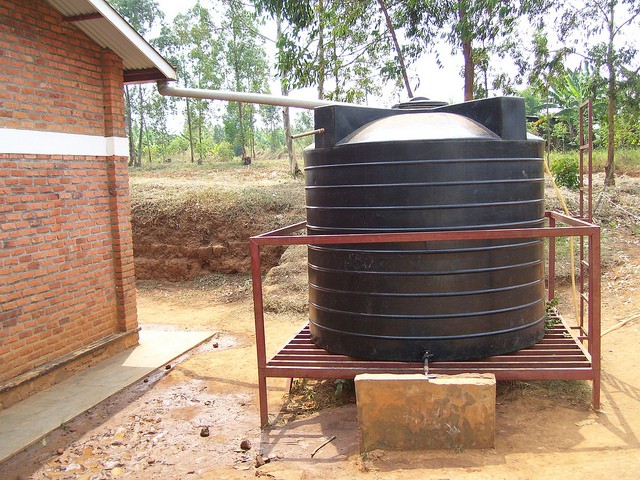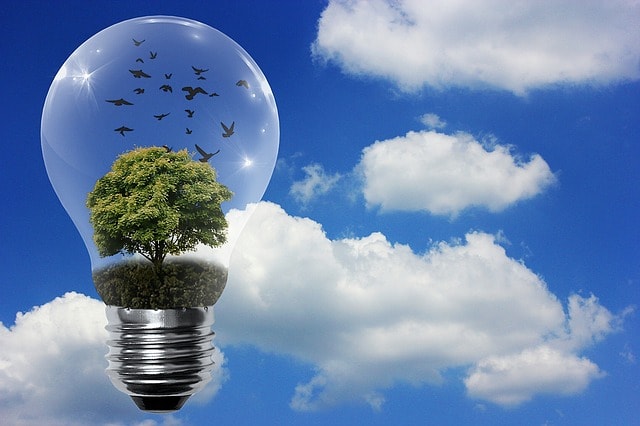What is Rainwater Harvesting, its Importance and Various Methods to do it

Rainwater harvesting is the storing of rainwater during the monsoon season for the purpose of using it during periods of water scarcity. Generally speaking, it is a process used for collecting and storing rainwater for human use.
Rainwater harvesting is best described as the technique by which rain water is accumulated and stored with the intention of reusing it during the dry season or when there is a drought.
With rapid climatic changes, increase in global temperature and population growth, there is a scarcity of potable water in many countries across the world.
The gradual falling of water levels, are a cause of serious concern not only because it leads to shortage of usable water but also because in coastal areas it causes imbalance in salinity of the area.
Rapid industrialization and disposing chemical waste into water-bodies leads to pollution of rivers, lake and water-bodies. This is a global problem and needs a speedy solution. The supply of fresh water in this planet cannot be increased. So an alternative method must be sought for. One such method is harvesting rainwater.
Rainwater harvesting is an easy and economical way to deal with this crisis. As men are becoming environment responsible, rain water harvesting is gaining popularity leading to eco-conservation and constructive use of natural resource. Falling water tables are widespread and most people in urban areas are dependent on bottled water which is neither cost-effective nor dependable.
The possibility of pollution cannot be completely ruled out. The question of water security is at present a major issue in many parts of the world. One way to deal with this crisis is to adopt rainwater harvesting.
Importance of Rainwater Harvesting
1. Rainwater harvesting or the collection of rainwater in a proper way, can be a permanent solution to the problem of water crisis in different parts of the world. This simple method can put forward a solution which will be workable in areas where there is sufficient rain but the groundwater supply is not sufficient on the one hand and on the other surface water resource is insufficient.
This is particularly applicable in hilly areas where it can be utilized for human consumption, by animals and also for farming. In remote areas, where surface pollution is comparatively low, rainwater harvesting is ideal.
2. Although the earth is three-fourths water; very little of it is suitable for human consumption or agriculture. Rainfall is unpredictable and there is a constant shortage of water in countries which are agriculture dependent or generally drought prone.
3. A bad monsoon means low crop yield and shortage of food. Even animals suffer from scarcity of water. Africa and the Indian subcontinent face acute water crisis during the summer months. The farmers are the most affected because they do not get sufficient water for their fields. Rainwater harvesting therefore is an ideal solution for farmers who depend on monsoon for consistent water supply.
4. Unavailability of clean water compels the consumption of polluted water, giving rise to water-borne diseases and high rate of infant mortality. In recent studies it has been observed that in Lima (Peru) nearly 2 million people do not have access to any water supply and those who do have access get water supply which has a high possibility of being contaminated.
It has been reported that the water crisis in some parts of Honduras is so severe that the municipal corporation of those areas cannot supply enough water even to those residents who have municipal water supply connection. This has been reported by Anna Kajumuto Tibaijuka, Under-secretary General, UNED UN-Habitat.
5. If rain water, which comes for free, can be collected and stored, instead of letting it run off, it could be an alternative to back up the main water supply especially during dry spells. Its importance will not be limited to an individual family but can be used by a community as well.
Systematic rainwater harvesting can help in irrigation with minimum use of technology and is therefore cost effective. This simple method can help farmers to prevent their crops from drying due to lack of water. It also creates a sense of social responsibility and awareness about the environment.
6. The importance of rainwater harvesting lies in the fact that it can be stored for future use. Just as it can be used directly so also the stored water can be utilized to revitalize the ground level water and improve its quality. This also helps to raise the level of ground water which then can be easily accessible. When fed into the ground level wells and tube well are prevented from drying up. This increases soil fertility. Harvesting rainwater checks surface run off of water and reduces soil erosion.
7. In areas having sparse and irregular rainfall, scarcity of water is a persistent problem. It cannot be completely resolved but can be mitigated through rain water harvesting. Rainwater harvesting is an ideal solution to water problems in regions which receive inconsistent rainfall throughout the year.
Methods of Rainwater Harvesting
The most common methods for rainwater harvesting are:
1.Surface run off harvesting
Surface run off harvesting is most suitable in urban areas. Here rain water flows away as surface run off and can be stored for future use. Surface runoff rain water in ponds, tanks and reservoirs built for this purpose. This can provide water for farming, for cattle and also for general domestic use. Without sufficient water health and hygiene are severely affected. This adds to the environmental pollution.
Surface water can be stored by redirecting the flow of small creeks and streams into reservoirs on the surface or underground.
2. Roof top rain water harvesting
Roof top water harvesting can be done in individual homes or in schools.
For this the first requirement is to intercept the rainwater to flow towards a definite direction
The water should reach a bucket or a tank through pipes made from wood or bamboo. In urban areas pvc pipes can be used.
The rain water can be directly collected by keeping a bucket or container beneath the roof.
The first flow of rain water will usually carry with it dust particles, leaves, insects and bird droppings. So it is best to use a detachable downpipe to divert the first rain water.
Recharge pits can be constructed to hold rain water. These can be of any shape or size, depending upon the amount of rain the area receives. These pits need to be filled with , boulders, gravels and coarse sand, which will act as a filter for the impurities that are carried along with the first flow of water.
Roof top rain water can be harvested through existing tube wells. In areas where the aquifer that holds the ground water has dried up, tubewells source deeper into the soil for water. Roof top rain water harvesting can be done through these dried up tubewells to rehydrate the dried subsoil water level.
As man became more and more dependent on technology, he moved away from nature and perhaps ignored the value of natural resources. In his march towards power, he forgot to save the precious water which is another name for life. Probably because most of the natural resources come for free we fail to how precious it is until a worldwide crisis was issued.
It is our unfriendly attitude towards nature that has polluted water-bodies and left them unfit for any use. Natural resources come in abundance but they cannot be produced in our workshops. Today most of the countries of the world are facing the scarcity of water and are taking up rainwater harvesting for the dire necessity of survival. So the seriousness of the issue has been realized the seriousness and efforts to overcome this problem has been initiated.
Photo by: SuSanA
Need of rainwater Harvesting
Rainwater harvesting is a simple process or application of technology that collects, stores, and purifies rainwater. Rainwater harvesting requires the following components to be considered:
- Collection – Helps to collect & store the rainwater
- Conveyance – It transports collected water to the recharge zone
- Filtration – Helps to filter the collected rainwater while removing dirt
- Tanks – Used to store filtered water
Rainwater harvesting involves collecting, filtering, and storing rainwater using artificially designed mechanisms.
Methods of Rainwater Harvesting
There are different type of methods that helps to execute rainwater harvesting which will be explained below:
- Storage of Direct use purposes
During this method, the rainwater that is collected from the roof of the building is then moved to a storage tank. The tank needs to be designed as per the water requirements, level of rainfall etc..
The drainpipe needs to have a filter at the first flush device through a filtration system before connecting to the tank. However the tank needs to have an excess water overflow system.
2. Recharge Groundwater
Groundwater can be recharged by various kind of structures to ensure the rainwater is in the ground instead of moving away from surface.
3. Recharge Trenches
It is provided with upper layer of soil. Moreover the recharge trench flows on the ground while being refilled with media like pebbles. It is made for harvesting surface runoff
Overall, rainwater harvesting is a more of a sustainable process that aids in the conservation of water for later use. Water scarcity is also a growing concern, particularly in today’s climate. As a result, rainwater harvesting is one of the BEST ways to conserve water.
Is rainwater harvesting illegal?
Majority of the states do allow to execute rainwater harvesting but it varies from state to state so its important for you to check with your own state’s legislation before engaging in rainwater harvesting. For this scenario, if we consider within United States of America that there are some of the states which requires a permit before rainwater system can be executed. But most states in the United States of America allow people to engage in rainwater harvesting & some do provide incentives.
To further emphasize that rainwater harvesting is not illegal on a federal level however the water laws are mainly handled on a state level. Hence, firstly it is best to check on the state’s legislature on whether there are any restrictions for rainwater harvesting. If there are no restrictions then try to find out on whether are there any financial incentives that will be provided for rainwater harvesting so it would allow you to attain an impressive gain
Why are permits needed for Rainwater harvesting?
In terms of water availability, it varies from state to state since each state would follow a doctrine on how water should be distributed amongst its residents. The states that do possess abundant of water would have a different set of laws as opposed to the states where water is scarce because of drought
There are significant reasons why states do implement water laws is to make sure that there’s a balance between protecting the rights of the individuals to have access to water while protecting the water sources from being unfairly treated
Sources






